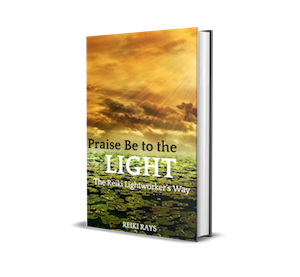Article by Colin Powell
Reiki, which I believe is present within everything, is a word, originally used in Japan, to describe a non-dual spiritual vibration that can bring balance physically, mentally, emotionally and spiritually, in line with our true life purpose. When we are aligned with our true life purpose we are perfectly happy, at peace and not worried about anything (a state known as Anshin Ritsumei). This is the ultimate aim of Reiki practice and in this state we become more fully aware of our true nature, the Great Bright Light within.
Usui Reiki Ryoho is a Japanese practice for balancing the mind and body through light touch. It can be performed on oneself or another person who is fully clothed and reclining or sitting comfortably. Hands may be placed on or slightly above the body in various positions (none of which will invade personal privacy).
The main concept behind Reiki Ryoho is that although the mind and body have excellent protection and repair mechanisms, if they are subject to constant stress or the person is not following their true life path then these mechanisms cannot cope, resulting in build-ups of toxins and energetic imbalances (byosen), from which symptoms can develop. Such a state also leaves a person more open to infection and, if the mind becomes distracted, more accident prone.

Image by Turinboy
The full original name of the system is Shin Shin Kaizen Usui Reiki Ryoho (the Usui Reiki Healing Method for Improvement of Mind and Body), named after Mikao Usui, who developed it in Japan at the beginning of the 20th century. The teachings traditionally consist of 3 main parts (note that only the first two are required to become a full Reiki practitioner and you can practice Reiki on yourself and friends and family after just the first part):
Shoden (First Teachings) in which you learn the basics, including what Reiki is, what it isn’t, the history of the system, the Gokai (Five Reiki Precepts: Just for today, don’t be angry, don’t worry, be grateful, work diligently and be kind to yourself and others), how to perform a Reiki session on yourself and others, including the concept of byosen and some simple meditative techniques to help you remain grounded but also become more aware of the effects of Reiki.
Okuden (Inner Teachings) in which you go deeper into the teachings and learn some more techniques, including how to perform absent (distant) Reiki sessions, psychological treatments (to help change unwanted habits or ways of thinking). You may also learn more traditional ways to give Reiki treatments e.g. using the eyes, breath and hand movements such as patting, pressing and stroking as well as more meditations to go deeper into yourself and experience various subtle energies and states of mind.
Shinpiden (Mystery Teachings) in which you learn how to awaken the awareness of Reiki in others and more fully commit to the practice of Reiki as a life-long spiritual path. You may also learn more in depth knowledge about subjects covered in Shoden and Okuden and about Reiki practice in general. Although the basic concepts of Reiki can be taught, they are best experienced in-person with the guidance of an experienced Reiki Teacher (Master).
To be able to practice Usui Reiki Ryoho, one needs to have received a series of initiations (also known as Reiju or attunements), usually given during each of the above parts and may also be continued to be received regularly at Reiki share meetings. They can only be given by a Reiki Teacher who has received them from his/her teacher and are best experienced in-person, which is the traditional way. The initiations (as the name suggests) initiate the process of increasing or enhancing awareness of Reiki to help oneself and others achieve balance of mind and body.
Free eBook download: We’ve created an eBook with our best articles on this topic, and offer it for free to all our newsletter subscribers.


Colin Powell
Colin has been a Usui Reiki Ryoho Teacher, in the UK, since 1998 and believes in keeping Reiki practice as pure and as simple as it was originally meant to be. To this end he began researching the history and development of the system of Reiki and found that, although there was a huge amount of information available on the internet and in books, much of it was contradictory or did not seem to “fit” quite right. He has been initiated into several styles of Reiki practice including Usui Shiki Ryoho, Gendai Reiki, Komyo Reiki and Jikiden Reiki, drawing on these influences and his own research to teach Reiki: pure & simple. You can contact Colin by email: [email protected], Website: http://homepage.ntlworld.com/reiki.colin/reiki.htm, Facebook: http://www.facebook.com/reiki.pureandsimple





I really like and appreciate the way you talk about Reiki. Thank you for this great article 🙂